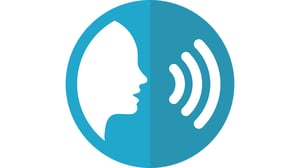It's the new year, and it's time to ramp up your collection of customer insight from your recorded conversations in order to garner competitive intelligence, identify at-risk customers, uncover workflow issues, discover underperforming agents and detect possible compliance infractions.
All of this is possible with high quality audio recording. As the saying goes, garbage in garbage out. In order to yield the intelligence you need from your call recordings, you require high fidelity, dual channel audio capture and recording. This is the only way to ensure your speech analytics solution is adequately interpreting and transcribing both your agents and your customers. 
To ensure you have the right audio capture solution in place to power your speech analytics, here are five questions you need to ask yourself:
- DUAL CHANNEL - Does my current audio capture software capture the agent and the customer on separate channels? This is imperative to discern who said what during over-talk, e.g. When your agent and your customer are talking over one another, mono recording solutions can't determine who is saying what, and important insight can be missed from your interactions.
- HIGH FIDELITY - Does your current call recording solution support upper-end audio sample format rates like G.7111 and OPUS? If not, your recorded audio may be flawed.
- REAL TIME - Does your recording solution capture call audio in a real-time streaming manner so your transcription and analytics engine can process the call as it happens, or post-call? You need real-time audio capture to gain insight your supervisors and managers can act on immediately.
- VERSATILITY - Does your audio capture software support a wide range of telephony environments (such as IP and SIPREC), and can scale to thousands of simultaneous calls? This is important so every call can be recorded across all of your locations.
- OPEN - Does your recorder support the collection of non-audio data (such as CRM, ACD or agent desktop applications) via REST API, which can be appended to audio recordings? This is critical in order to correlate, discover patterns and pinpoint specific types of interactions.
As the new year gets under way, now is the time to ensure you are adequately capturing your audio interactions and not missing critical customer insight.
To learn more about the capabilities or inabilities of your current audio capture environment, click below for a free consultation.

